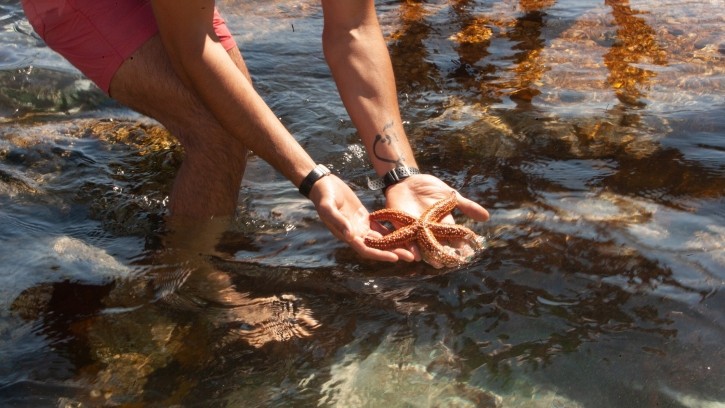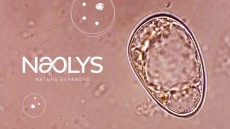Starfish synergy: NZ upcycled skin care project sees commercialisation opportunity fuelled by Asia demand

Researchers from Cawthron Institute and NZ Institute for Plant and Food Research developed a skin cream harvesting the collagen of the starfish over a two-year period.
Funded by the Sustainable Seas National Science Challenge, this project came out of an attempt to tame the starfish population that was decimating shellfish at Ōhiwa Harbour – effecting the food supply of the local Maori people.
Project representative Dr. Matt Miller told CosmeticsDesign-Asia that the team had pursued the upcycling idea as it fits in well with the Maori’s beliefs of finding some use for starfish in the ecosystem instead of discarding them altogether.
Why collagen?
After conducting a chemical analysis on all the properties of the starfish for a year, the researchers went with collagen as it was “a low-hanging fruit.”
Firstly, it was easier to extract compared to other substances such as calcium carbonate, protein, and other nutrients used in supplements or fertilisers. Secondly, there was already a demand for collagen in cosmetics, and this market pathway was relatively easier to nutraceuticals and pharmaceuticals – which typically takes many years of development.
Dr. Miller elaborated on Asia’s rising demand for collagen cosmetics: “There’s lots of opportunities in New Zealand. Not just in starfish, but in a lot of our marine collagen species to have bigger impacts across Asia. We have commercial products from fish skins in production right now.
“I think South East Asia and Asia in general have a very huge demand for such products. So, I think it’s good synergy there. I think there is huge possibilities of us, working with people from New Zealand and from Asia to develop high value products.”
Sustainable on all fronts
While there is already a market for starfish creams in South Korea, Dr. Miller believes that an NZ-branded product has “real social and cultural consciousness” when it is produced by the indigenous communities.
“Marketing can go even to a higher place with indigenous branding rights, social and cultural branding behind it. So, I think there is a huge appetite for high quality products like this. But that won't be matched by good production and sound ecological sustainability credentials.”
That said, a key project consideration was scaling production accessibly for the Maori. In this regard, the researchers had worked with a collagen chemist to develop a production process that fits into their traditional workspace.
According to the team, 60 bottles of skin cream were presented as a proof-of-concept to the Maori, and Dr. Miller claimed that the idea was well-received by them.
“We worked with an ecologist with 15 to 20 years of experience with the Maori community. When we presented our work, they’ve been highly receptive to this, and keen to find some use out of starfish. Like I said before, they're very against just throwing these things away. They want to see how it could work in their community. When we create something physical instead of talking about a concept, they can feel that, run it on their face, and go “actually, we could make this”, and it becomes a more organic approach.”
On upcoming project plans, Dr. Miller said: “Next step developing the commercialisation pathway, and connections with the industry partners to make it a marketable product. There are a lot of business models, like they can own it all or work with other partners. The business model must be worked out with the Maori. While it’s exciting times, it may take a longer consultation than it would be if it was purely a commercial enterprise.”

![Researchers develop green method to extract gold nanoparticles with unripe banana extract. [Getty Images]](/var/wrbm_gb_food_pharma/storage/images/_aliases/wrbm_medium/publications/cosmetics/cosmeticsdesign-asia.com/headlines/formulation-science/gold-nanoparticles-biosynthesised-with-banana-extract-show-cosmetic-benefits/16511597-1-eng-GB/Gold-nanoparticles-biosynthesised-with-banana-extract-show-cosmetic-benefits.jpg)
![Margaret Dabbs aims to position itself in Asia as the leader in foot care and fill the gap in an underserved segment. [Margaret Dabbs]](/var/wrbm_gb_food_pharma/storage/images/_aliases/wrbm_medium/publications/cosmetics/cosmeticsdesign-asia.com/headlines/brand-innovation/foot-care-asia-margaret-dabbs-eyes-massive-potential-to-fill-unmet-foot-care-needs/16439867-1-eng-GB/Foot-care-Asia-Margaret-Dabbs-eyes-massive-potential-to-fill-unmet-foot-care-needs.jpg)
![When disposed of in landfills, coffee grounds contributes to the generation of methane, a greenhouse gas that contributes to climate change. [Getty Images]](/var/wrbm_gb_food_pharma/storage/images/_aliases/wrbm_medium/publications/cosmetics/cosmeticsdesign-asia.com/headlines/market-trends/upcycled-ingredients-still-linked-with-lower-prices-and-quality-in-sea/16439921-1-eng-GB/Upcycled-ingredients-still-linked-with-lower-prices-and-quality-in-SEA.jpg)






![We round up our most-read stories on the hottest beauty brands. [YSL]](/var/wrbm_gb_food_pharma/storage/images/_aliases/wrbm_tiny/publications/cosmetics/cosmeticsdesign-asia.com/headlines/brand-innovation/brand-updates-from-lg-h-h-ysl-beaute-skinidea-and-more-beauty-brands/17401527-1-eng-GB/Brand-updates-from-LG-H-H-YSL-Beaute-Skinidea-and-more-beauty-brands.jpg)


![Laboratoires Expanscience introduces a ceramide-boosting flaxseed active to cater to trends such as regenerative skin care and supports regenerative agriculture. [Getty Images]](/var/wrbm_gb_food_pharma/storage/images/_aliases/wrbm_tiny/publications/cosmetics/cosmeticsdesign-asia.com/headlines/formulation-science/expanscience-ceramide-boosting-flaxseed-active-taps-into-regenerative-skin-care-trends/17408373-1-eng-GB/Expanscience-ceramide-boosting-flaxseed-active-taps-into-regenerative-skin-care-trends.jpg)

![Estée Lauder will launch new products developed by a local team especially for its Chinese consumers in Q4. [Estée Lauder]](/var/wrbm_gb_food_pharma/storage/images/_aliases/wrbm_tiny/publications/cosmetics/cosmeticsdesign-asia.com/headlines/brand-innovation/estee-lauder-set-to-debut-first-products-developed-by-china-r-d-facility-in-q4/17401473-1-eng-GB/Estee-Lauder-set-to-debut-first-products-developed-by-China-R-D-facility-in-Q4.jpg)
![ESG considerations have emerged as a central focus for China's beauty brands. [Getty Images]](/var/wrbm_gb_food_pharma/storage/images/_aliases/wrbm_tiny/publications/cosmetics/cosmeticsdesign-asia.com/headlines/market-trends/china-s-beauty-brands-embrace-esg-focus-as-consumer-priorities-shift/17304986-1-eng-GB/China-s-beauty-brands-embrace-ESG-focus-as-consumer-priorities-shift.jpg)



